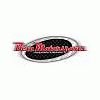-
Posts
9842 -
Joined
-
Last visited
-
Days Won
56

johnc replied to Mikelly's topic in Non Tech Board

johnc replied to Mikelly's topic in Non Tech Board

johnc replied to Mikelly's topic in Non Tech Board

johnc replied to AKWIKZ's topic in Brakes, Wheels, Suspension and Chassis

johnc replied to zredbaron's topic in Brakes, Wheels, Suspension and Chassis

johnc replied to zredbaron's topic in Brakes, Wheels, Suspension and Chassis
